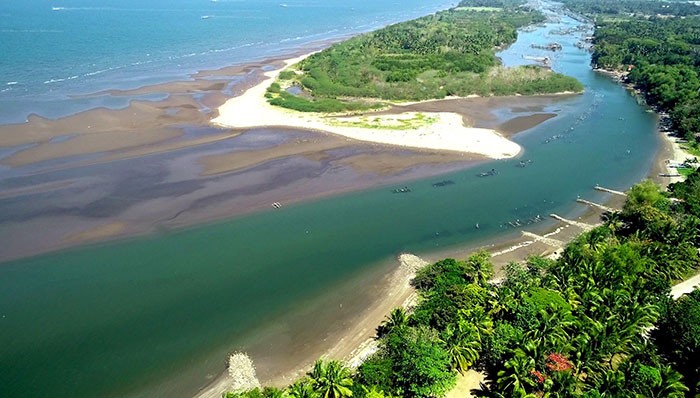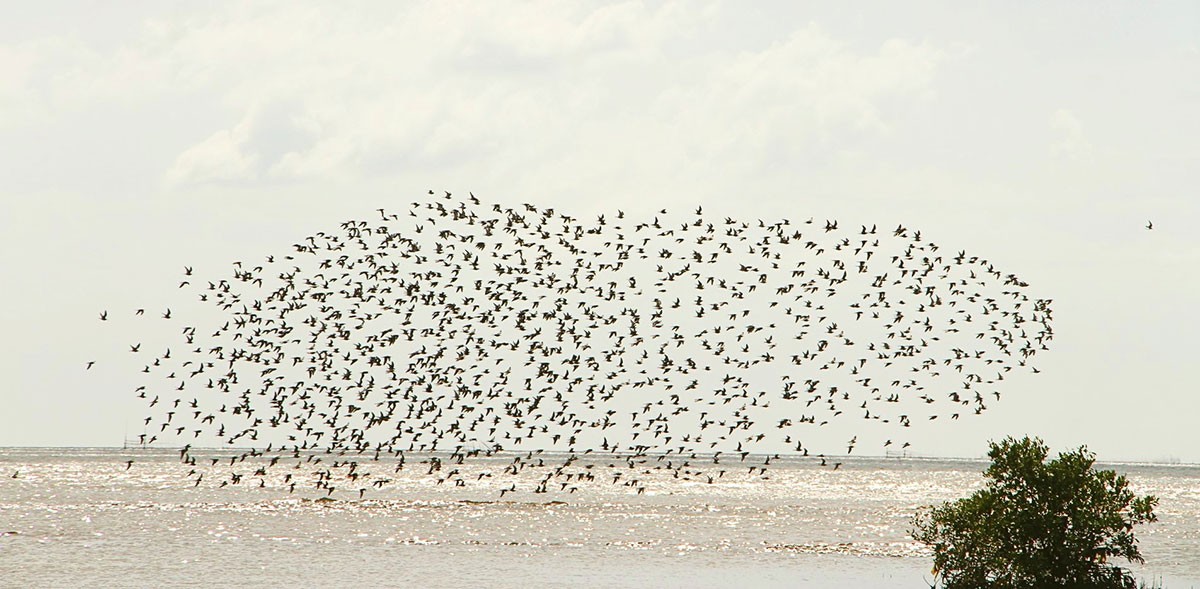
Wetlands are unheard body of waters to some, but it plays a critical part in our natural environment. They protect the shores from wave action, prevents flooding and a precious habitat to terrestrial and aquatic wildlife species.
In the province of Negros Occidental, a coastal wetland named Negros Occidental Coastal Wetlands Conservation Area (NOCWCA) is a contiguous wetlands area with a coastline of 109.52 kilometers. It covers the municipalities of Pulupandan, Valladolid, San Enrique, Pontevedra, Hinigaran, Binalbagan, Ilog and the cities of Bago, Himamaylan and Kabankalan.
Named as the 7thRamsarsite in the Philippines and the 4th East Asian Australasian Flyway Network Site in the Philippines, NOCWCA is one of the richest and most diverse coastal resources in Western Visayas, particularly mangroves andis home to economically important species such as oysters, green mussels nylon shells, angel wings shells, shrimps, and crabs.
Its waters are home to three species of globally threatened marine turtles – the critically endangered (CR) Hawksbill turtle (Eretmochelys imbricata), endangered (EN) Green sea turtle (Chelonia mydas) and the vulnerable (VU) Olive ridley turtle (Lepidochelys olivacea). The endangered (EN) Irrawaddy dolphin (Orcaella brevirostris) also migrates across its coastal areas at certain period of the year.
NOCWCA is a sanctuary for at least 80 species of water birds including the endemic and threatened Philippine duck (Anas luzonica), globally significant population of Black-tailed godwit (Limosa limosa), Great knot (Calidris tenuirostris), Herons, Sandpipers, Egrets, Bitterns, Stilts and other species of waterbirds migrates in the area.

It also supports 1.5% of the global population of the endangered (EN) Great knot and 2.1% of the near-threatened subspecies of Black-tailed godwit.
The wetland serves as a habitat for more than 20,000 waterbirds at a time, making it a crucial site for bird conservation.It also hasrare bird species visiting the area including Eurasian oystercatcher (Haematopus ostralegus), Eurasian wigeon (Mareca penelope), endangered Far eastern curlew (Numenius madagascariensis), endangered Spotted greenshank (Tringa guttifer) and the world’s most critically endangered shorebird species – the Spoon-billed sandpiper (Calidris pygmaea).
Indeed, NOCWCA is rich in terrestrial and coastal biodiversity but it sadly faces some potential threats including the conversion of mangrove forests and other wetlands to commercial, residential or aquaculture uses, pollution by industrial waste, coliform contamination and overfishing in some areas which threaten is abundant biodiversity and the sustainability of local livelihoods.
Wetlands highly affect our lives through its various importance such as its provisionof great volume of food with high level of nutrients that attracts a lot of animal species; it also store carbon through its plants and soil thereby functioning as carbon sink and prevent floods by functioning as natural sponges that trap and stores water, lowering flood heights and reduces soil erosion.
It is also a good source of freshwater, and as we face a growing freshwater crisis, saving the wetlands isn’t too late at all. This year’s theme: “Wetlands and Water” of World Wetlands Day highlights its connection in an inseparable co-existence that is vital to life, wellbeing and the health of the planet.
“Protecting our wetlands here in Western Visayas is as important as protecting ourselves from coronavirus disease (COVID-19) that causes the pandemic we are facing nowadays. It is home to wide range of plant species, water animals and also sustains the livelihood of people nearby. As a carbon sink, the wetland helps mitigate climate change,” said Francisco E. Milla, Jr., Regional Executive Director of DENR Region 6. (DENR-6)
















